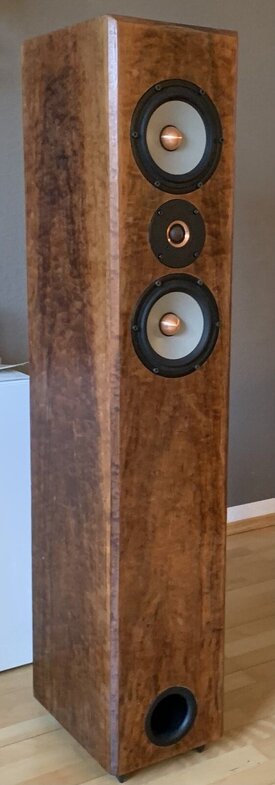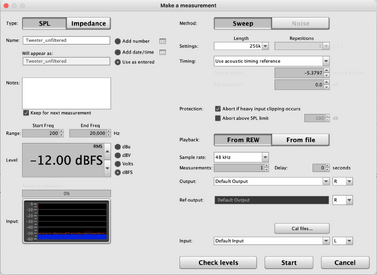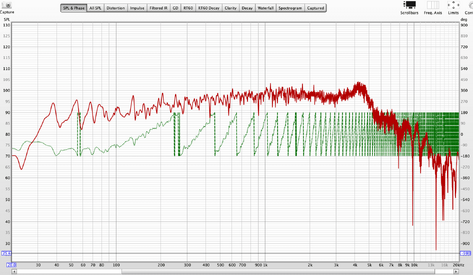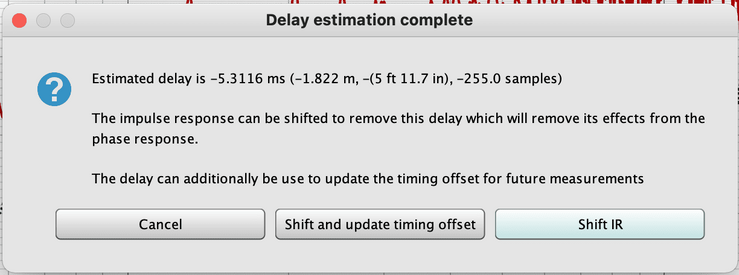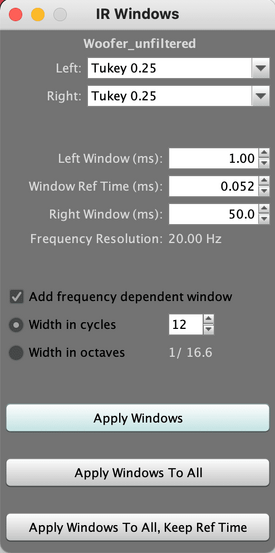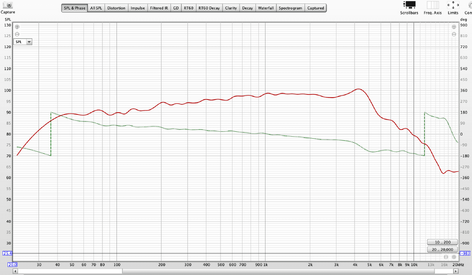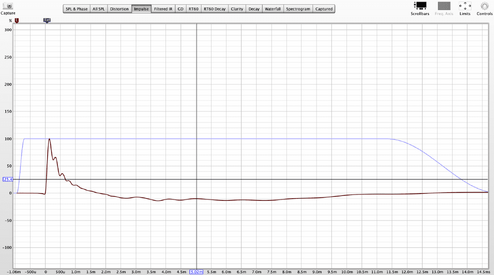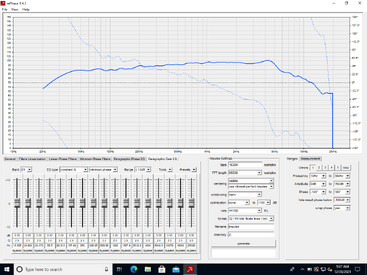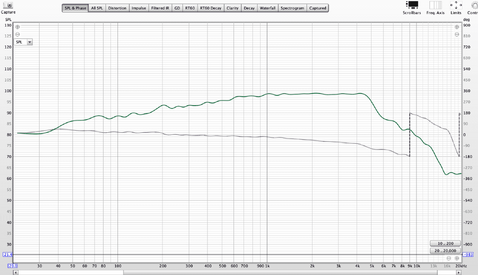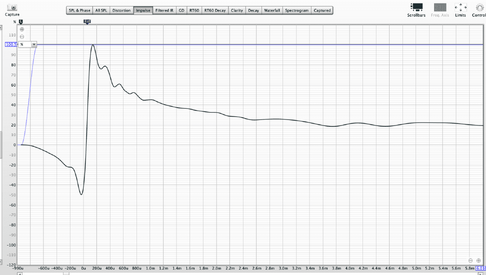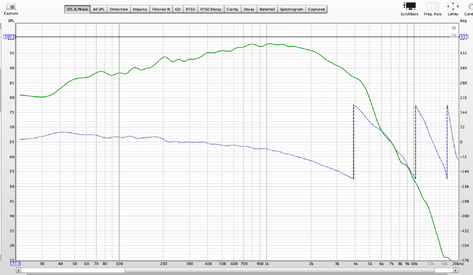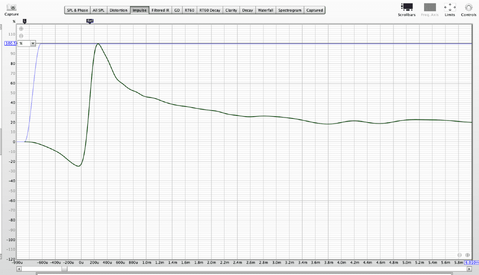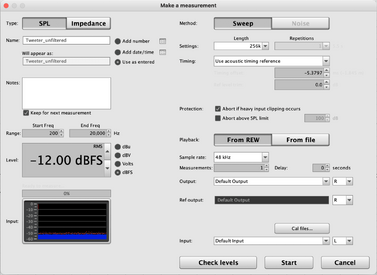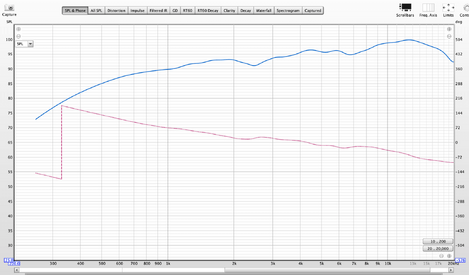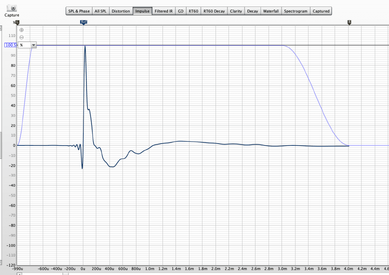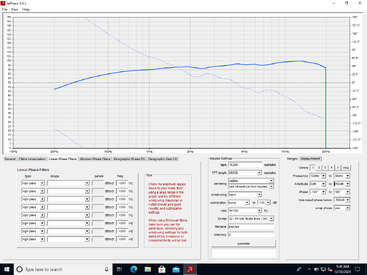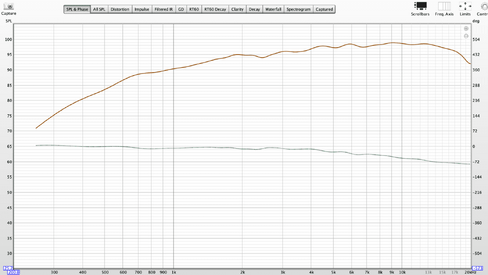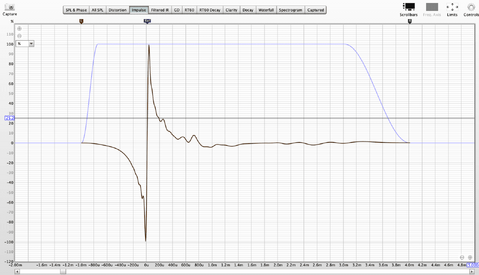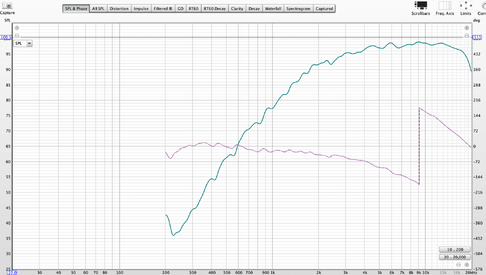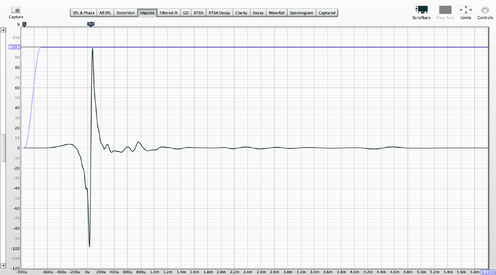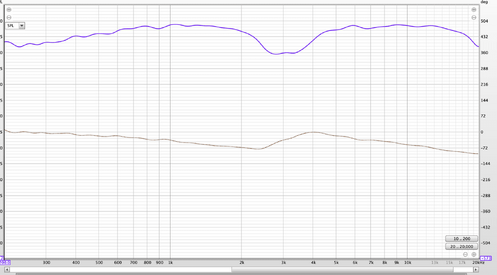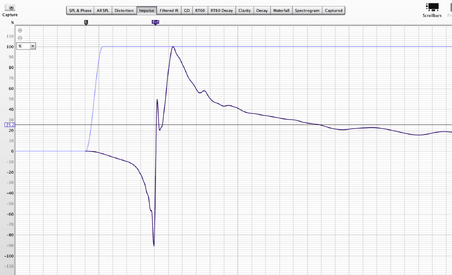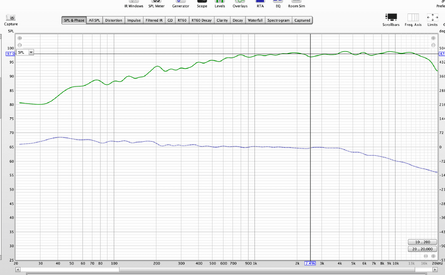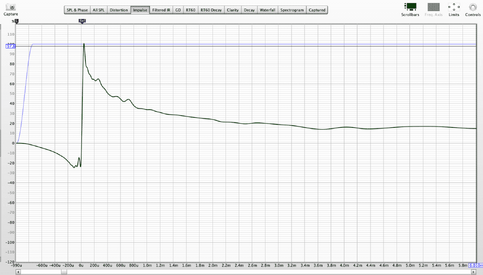bluecipher
Registered
Thread Starter
- Joined
- Dec 27, 2021
- Posts
- 6
Hi all,
am I am pretty new to things like REW, DSPs, FIR filters etc., so please be patient...
I am using a Mini-DSP 2x4 HD to create a digital crossover for my two-way DIY speaker. After doing a "normal" XO I thought I give FIR filters a try, just for the fun of it. After doing a few rounds using REW for measurement and rePhase for filter design, I actually got something working that does sound better than before. I get a pretty decent flat frequency and phase reponse, however the impulse graph is looking a bit weird..
.

So basically I get a larger negative peak before the actual "smaller" positive reponse. Am I doing something terribly wrong here? Is that a sign of some huge mistake I'm making? Thanks for any hints!
am I am pretty new to things like REW, DSPs, FIR filters etc., so please be patient...
I am using a Mini-DSP 2x4 HD to create a digital crossover for my two-way DIY speaker. After doing a "normal" XO I thought I give FIR filters a try, just for the fun of it. After doing a few rounds using REW for measurement and rePhase for filter design, I actually got something working that does sound better than before. I get a pretty decent flat frequency and phase reponse, however the impulse graph is looking a bit weird..
.
So basically I get a larger negative peak before the actual "smaller" positive reponse. Am I doing something terribly wrong here? Is that a sign of some huge mistake I'm making? Thanks for any hints!








